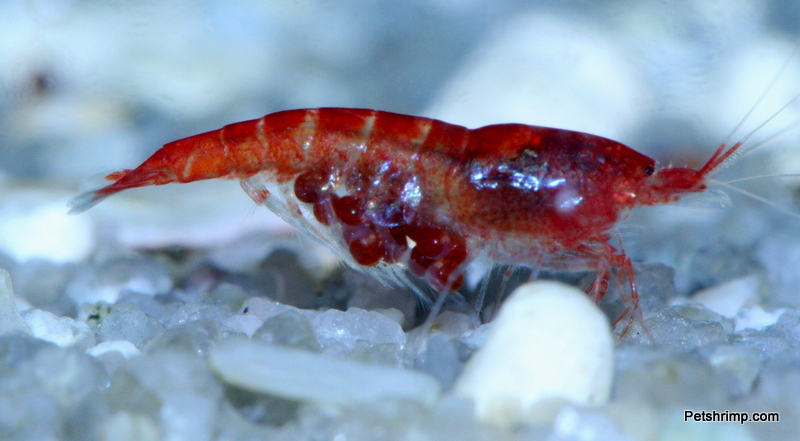|
Name: |
Supershrimp, Hawaiian Red Shrimp, Opae ula, Hawaiian Volcano Shrimp, |
|
Scientific Name: |
Halocaridina rubra |
|
Size: |
around 1.2cm when fully grown. |
|
Temperature: |
55℉-86℉, very adaptable |
|
Water Parameters: |
Needs brackish water. In our tanks salinity ranges from 10 to 23 ppt (specific gravity of 1.008 to 1.016 ) for breeding purposes. Has a wide salinity tolerance. |
|
Food: |
Fish food (flake, pellets etc) |
|
Origin: |
Endemic to the Hawaiian Islands |
|
Reproduction: |
Reproduces via eggs carried around by the female for about 30-35 days until larvae hatch. Larval |
The Hawaiian Red Shrimp is one of the most amazing creatures on our planet. It is a shrimp of the extremes. Endemic to the anchialine ponds (natural pools in volcanic rock with brackish water and underground connection to the ocean) on the Hawaiian Islands, it had to develop a host of abilities to survive in very hostile environments and circumstances. Hence, this shrimp became a “Supershrimp” of sorts over its millions of years of evolution. The Opae ula (as this shrimp is called in Hawaii) can take temperature extremes (high 30s to low 90s Fahrenheit), salinity extremes (from almost fresh water to more than full strength saltwater), environmental extremes (lack of food for months or years, very low oxygen levels), manages to live for more than 20 years if given the right conditions!
Sadly, unscrupulous companies and individuals sell these shrimp in spherical, fully sealed glass containers widely called “ecospheres.” It is claimed by the companies that sell them that they are selling a fully functioning ecosystem with the shrimp and the algae forming a mini ecosystem. The shrimp eat the algae and produce waste. The waste serves as a fertilizer for the algae. However, that claim is uninformed nonsense at best, and a sad and devious lie for the sake of profits and to the detriment of these wonderful animals. The truth is that these shrimp slowly starve to death, suffocate and get poisoned in those containers, due to lack of food and oxygen, and the accumulation of shrimp waste. Those kinds of containers would kill any other shrimp within a few days, but it takes 1-3 years for these “Supershrimp” to finally die, due to its remarkable physiology to deal with extreme conditions. During this multi-year torture, they actually *shrink* (every time they molt) due to lack of food, which means that they are basically consuming their own body. The lack of food kills them in the end. The little algae they find in the container lacks in nutritional value and is just not enough to keep these shrimp alive for long. It seems to be “in” and “cool” to have these tiny torture containers sitting on one’s desk nowadays, but hopefully this website can contribute towards informing the general public about what is really behind those “ecospheres.”
As if that were not enough, deceptive individuals (and even companies) sell these shrimp directly to shrimp enthusiasts, claiming that they either breed these shrimp in their “private” pools or in tanks at home. Again, these claims are complete misrepresentations. Although there may be some hobbyists selling shrimp to other hobbyists once in a blue moon, Petshrimp is the ONLY company *in the world* that sells captive-bred Supershrimp/Opae ula to hobbyists. All other companies and entrepreneurial individuals selling these shrimp take them from threatened habitats, even if they claim that such habitats are on their own property on Hawaii and they are “breeding” them there. For more information about this please read the captive-bred vs. wild-caught section of this website. Luckily, we have been breeding this species in sufficient quantities so that there should be no need to torture wild-caught (and most likely illegally caught from protected habitats) shrimp in tiny, sealed containers.
Unfortunately, more than 90% of this species’ habitats in Hawaii have been destroyed by development, and although this species is not listed as endangered, it should be considered endangered for all practical purposes. Hence, the purchase of wild-caught animals should be avoided at all cost.
